The Symbolic Value of Numbers
Numbers play a significant role in Classical Chinese texts. They indicate the quality more than the quantity. The systematic recourse to numerology helps to keep the framework of the discourse in mind, while setting out the processes of life. Without losing sight of the unity ‐which is the nature of life‐ numbers show its development, stage after stage. They are the reflection of the natural order.
One— Unity 一/ 壹 YI
Since the origins of writing, the number One has been written with one line, a single horizontal stroke 一. It indicates the number one, alone or added to others; for example, added to ten to make 11.
In the complex written form, One is written 壹, which means to apply uniquely to, to unite; identical, truthful.
A thousand years before our era, yi一, One, was already used to mean more than solely its quantitative value. It designated what comes first or what is one of a kind: the singular man, yi ren一人, is the sovereign, without equal, alone, solitary, the one who reigns over the multitude of subjects in the Empire. The sovereign alone is unique, because there cannot be two masters. The sovereign is One, the union and unity of all the beings living in the territory. The One is tied to absolute authority that contains and embraces everything. Containing everything, One is at the origin of every being. Embracing everything, One brings them together. One’s presence gives to each a fundamental meaning, a raison d’être.
The character’s common meanings reflect its richness: One, one alone, unique, but once, first, first of all, reaching out to a singular goal; to be a whole being; to join forces, bring together, conjoin; unify; the same, equal; always the same, constant, invariable; pure, unmixed, unaltered, and thus, perfect; complete; each; every.
Two — The Couple 二/貳 ER
Two horizontal strokes二together make the character for two. There is neither variation nor evolution in the way it is written. Its sense does not change: two, second, secondly. Fairly early on, however, we also see the idea that two is no longer One‐ that a disparity has been introduced. This may be difference or divergence. It may also become duplicity or inconsistency. This is where we get the common sense of the word: two, secondary, second, assisting, twice, doubled, pair, couple, same, equal to. Meanings also include to double; to make two; to divide, to differ, diverge. Mixed, mitigated, impure, inconstant, duplicitous.
Two, in complex written form, is 貳: help, second, to assist, to doubt, to dither.
Although one and one make two in mathematics, and the character looks like one written twice, the idea of Two 二in no way symbolizes two times One. Since One is everything and can absolutely not be doubled or duplicated, the two strokes should be considered symbolically as the opening of the One, as distinction within unity. They represent a necessary parting, but do not break the commonality of the two elements.
A specific character exists to designate the couple, what is dual: liang 兩, two that make a pair. Formerly, it represented a harness for two horses, a carriage yoked to two animals. The character is used for things that come in pairs, like shoes, or for two partners, two people in close relationship, working in intimate collaboration. Like the Two, the character liang 兩may be harmony or rescission – rupture. Thus, a double heart, liang xin 兩心,may be two brothers, two people connected through a strong and affectionate emotional bond and deep affinity; or, it may be a heart filled with duplicity.
Three — The Traid 三/參 SAN
The three horizontal strokes 三 that form the character for Three are a simple representation of three as a number or as the third place in a series. However, since the oracular inscriptions (circa 1400 BC), this character has designated a group of three‐ people or spirits, for example; three ancestral spirits or three important dignitaries close to the king.
Three in complex written form is參:the triad, a character that signifies to participate, to mix, to form a three-part harmony.
The character Three 三 evokes a triad. Symbolically, the Two open to allow the product of the couple to appear in the middle. This is the image of their union. Three三 is not three times one, but the Three that make One, or the way of considering unity in its tripartite aspect. This is where we get the common sense of the word: three, third, triple, triad, many. Three expresses the product of the couple and shows its co-penetration. It represents all the possible combinations of yin and yang, and as such it is the number of qi 氣 from which emerge the Ten Thousand Beings. Three is the manifestation of One in multiplicity.
Four— The Partition 四/肆 SI
In the oracular inscriptions and for centuries, the number Four was written with four strokes stacked atop one another, and finally 四. Beyond its quantitative value (four, fourth), is associated from the start with a fundamental division: that of the space under the authority of the King. On Earth, the monarch reigns from the center over the Four great regions that spread outward in the Four directions and comprise the Kingdom. Just as in Heaven, the Great Ancestor, supreme power, rules over the Four spirits protecting life on the earth in each of the Four great regions. These spirits are expressed in the Four winds. In complex written form, it is 肆: to spread out, arrange, exhibit.
The classical writing of Four 四 includes the division 八within a circle that becomes a 2 square 囗. This opens the possibility of all subdivisions, like the eight divisions of the compass rose. From this, we get the symbolic value of Four, as the prototype of all distinctions that lead to the partition of particular moments in time or specific sectors in space.
As well, we derive the potentiality of particular moments in time or specific sectors in space. The Four regions, si fang四方, are all the directions of space, just as the Four seasons, si shi 四時, are the model for all the moments of time. The character sh i時 is used in reference to season, hour, and every moment qualified by time. Similarly, the character fang方is used to mean square, territory, direction, quarter, area, place, placement.
Five — Centralisation 五/伍 WU
From the beginning until the third century BCE, the character for the number five was drawn as a cross, a crossing, an X, most often framed 二. at top and bottom. The classical writing settled upon the form 五. In complex written form, five is 伍: a squadron of five men, a group of five homes.
From the oracular inscriptions, groups of five are attested to as a sacrifice to a group of five ancestral spirits or, in another interpretation, five rituals spread over the course of the year. Groupings by five continue to serve as a principle in significant series: flavors, sounds, colors, planets. A little before the Common Era, five became the base for universal correspondences that establish wu xing 五行, five element cosmology. Five is thus the number of the central organization of life, the division and distribution; and the harmonious relationships among the five qi movements that comprise every living being and every phenomenon. It is the number of all series drawn from the model of the five Elements, and of the center. Five regulates the permutations and associations of all qi, organized according to their five notable characteristics.
Six — Organised Flow 六/陸 LIU
The archaic characters for six suggest closure: the roof, the cover, the interior, the residence. It is later understood as entry, penetration, qualities specific to yin. In complex written form, six is 陸, inferring dry land, continent, terrestrial pathway such as a road.
Six serves to put into action the organization initiated by five. It is the quint essential number of what administers by division and distribution. For example, we see the repartition of yin-yang qi into three pairs, whose exchange sat the juncture of heavenly dynamism and of earthly submission form the known universe (called the six junctions, liuhe 六合). The division of the services of government and administration is based on the model of the six Ministries.The six continuous or broken lines of the hexagrams represent the intertwining of they in-yang qi that make the tangible situations of life appear.
Six is the flux and reflux of animating qi, whose exchanges construct and maintain every space where life is realized. Six is thus the base number for the organization of the great animating currents or flows. For natural phenomena, it correlates to the six kinds of spirits that we offer upon the six ancestral altars. On earth, it is the rivers and water ways. Analogically, in the human body there are twelve meridians regulating vital circulation. In years, there is the cycle of 60 days and of 60 years.
Seven — Emergence 七/ 柒 QI
In archaic writings, the number Seven resembles a cross upon which the horizontal branch is sometimes quite reduced. We thus find a vertical stroke, an ascent, which crosses or cuts a horizontal stroke of lesser importance. This is where we may see emergence, the yang appearing, the young shoot coming up into the world. Towards the end of the third century BCE, the vertical stroke, from its straight position, bent in its lower part, which gave us the classical character for Seven, 七.
In complex written form, Seven is 柒: a lacquer tree.
Seven symbolizes the concrete appearance of life force, the vital impulse with its dangers and excesses. All growth contains potential failure. It is necessary to master this force pushing to emerge so that it does not become uncontrolled violence. Seven, qi, is the only number (besides a thousand, qian), that has an aspirated pronunciation.
Seven is a thrust, a gushing forth. It is the emergence of a secret inspiration. Yin-yang and the five Elements constitute its power, and must maintain an interior order to avoid disorder and disaster. There are seven superior orifices (of clear yang), seven emotions, seven Po souls representing the mental as well as corporeal upsurge of life.
Eight — Repartition 八/ 捌 BA
The separation into two parts, the origin of multiple repartition (division and distribution) has been, for all of time, the sign of eight. Its classical writing, 八shares much with two 二, insofar as we see, and have always seen, a division of what was One. Eight is division, repartition, divisibility. In complex written form, Eight is 捌: to tear, split, divide.
Eight manifests and spreads the qi and the vital spirit; what arises from Seven is everywhere, occupying the totality of space and time. Eight separates and distinguishes the qi. It sets forth and fixes a limit on their expansion. Since it is the double of four, Eight affirms the specificity of vital qi. It sets fundamental rules in place. Some examples of the variation of vital qi with Eight are: Eight trigrams, Eight winds, Eight extraordinary meridians.
Nine — Accomplishment 九/ 玖 JIU
Nine is the arrival of completion. Everything has been set forth, organized, achieved. In Nine months, the seed planted in the earth has grown into a plant, ready to be harvested. It has matured using all the resources its roots have to offer and nothing can make it grow more , or lighten the weight of its wealth. Nine is the number that expresses total unfolding, the greatest expression of yang, but also exhaustion, growing old. The interpretations of its writing vary in function with the meaning we wish to retain. We may see here the wilting or the unfurling of the plant. The oldest writings display a hook, a curve. In complex written form, Nine is 玖: black quartz.
Besides its numerical meaning, jiu九, the character for Nine, is also used to mean a large number forming a complete whole, lots of things assembled together. It is homophonic with the character jiu久: what has lasted a long time, or is antique, sometimes infers oldness.Its presence in several characters gives them a sense of gathering together. This is true for jiu鳩, the turtle dove, a character formed from bird鳥and Nine 九, and which also means to unite, assemble, gather. Or, also the character kui馗, which means a junction where the Nine roads come together.
Ten — Recomposed Unity 十/ 拾 SHI
The primitive writing for the number Ten is a vertical stroke. Later, a bulge or a small horizontal stroke was added, probably to avoid any possible confusion from a simple slip of the writing utensil. In complex written form,Ten is 拾: to gather, assemble, arrange.
The quantitative value appears to have dominated for centuries. Even if the vertical trait may evoke Heaven, or the movement between Heaven and Earth, only progressively does the symbolic content of these notions become enriched. The cross, designated by the classical character for Ten 十, may be understood as the intersection of a north–west line with an east–west line. The Four directions and the center are thus represented. It is the totality of what is expressed on Earth, the perfect arrangement. However, vertical associates easily to Heaven, as horizontal associates easily to Earth. If we consider the crossing of the vertical line with the horizontal one, the classical writing of Ten 十may be easily interpreted as the totality of what comes and descend from Heaven as well as the totality of what is received and spreads across the Earth, as the totality of Heaven–Earth. Ten thus takes the meaning of whole, of a complete and perfect whole, in the image of Heaven–Earth.
Ten thus also puts into unity all the differentiated elements of the composition of life. It is likewise the number of man, one of a kind, expressing the unity of cosmic life.
Courses By This Teacher
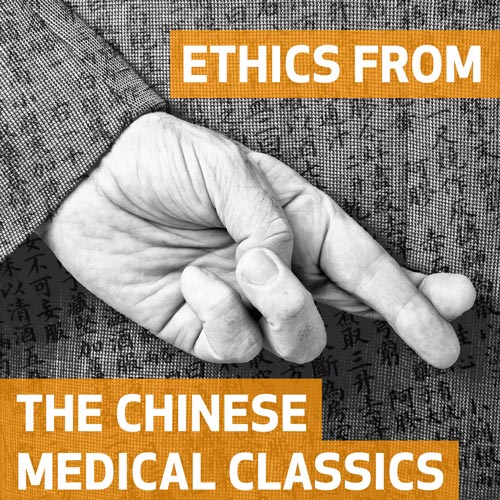

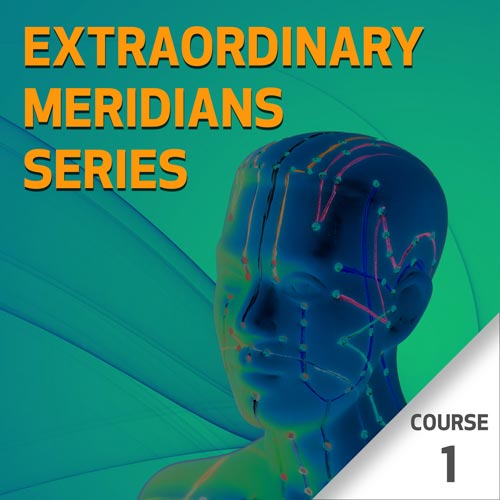

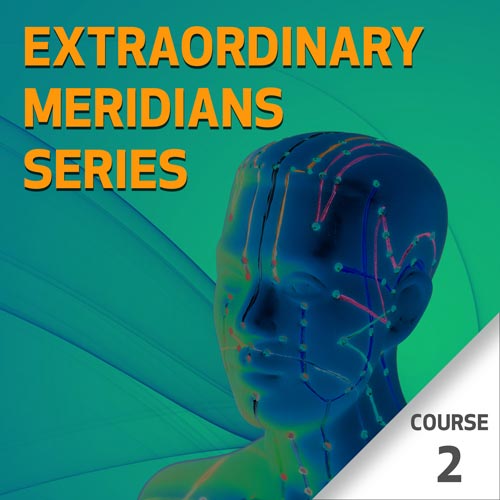

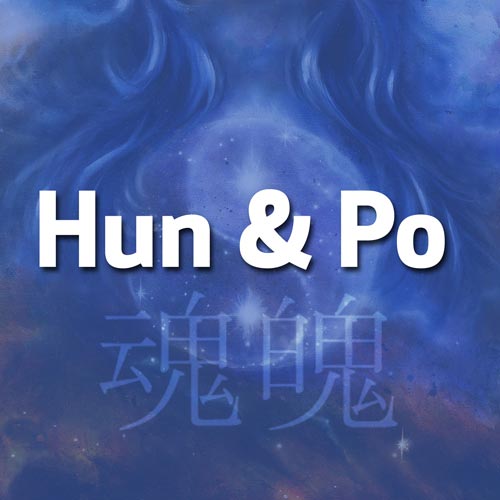



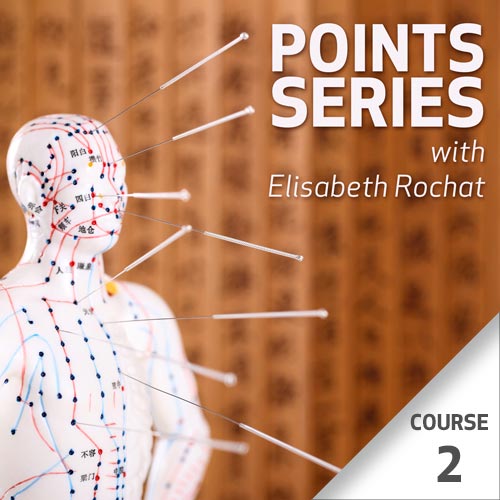

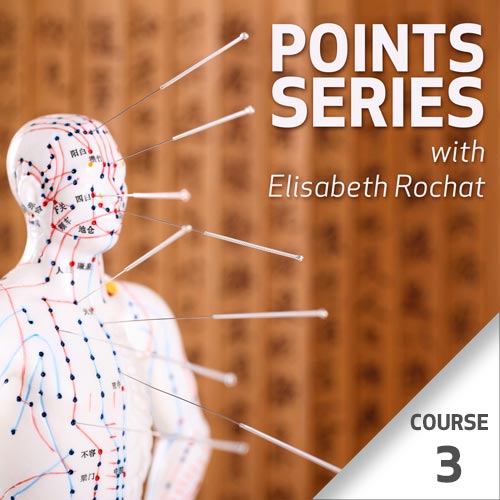

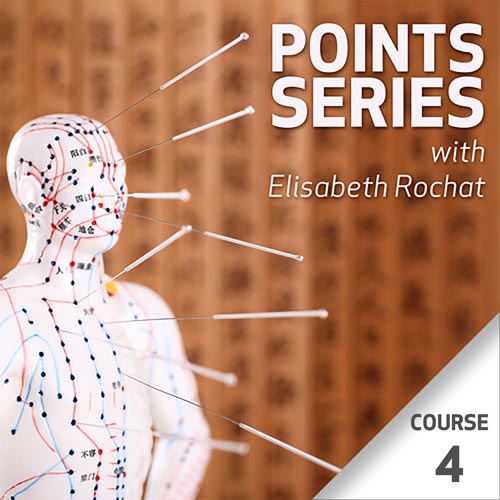

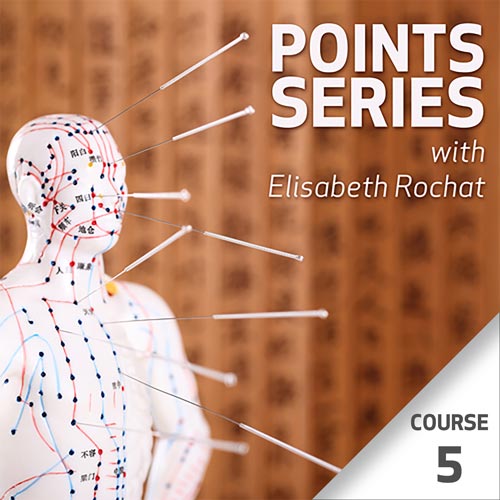

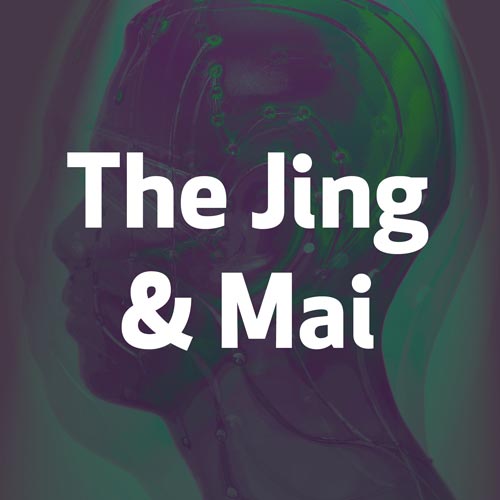



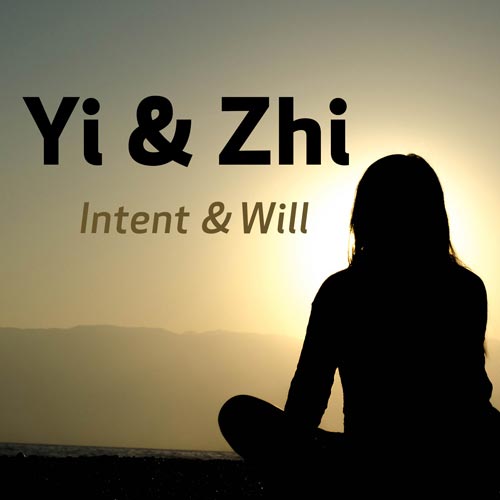

Overview
The Ethics lecture on the “Patient-Practitioner Relationship from the Chinese Medical Classics” is perhaps considered one of the best talks on Chinese Medicine. It was first presented in 1990 at the Traditional Acupuncture Institute, Maryland, presented by Father Claude Larre and Elisabeth Rochat de la Vallée.
The subject of this lecture has now been included within the body of CTA’s Masters degree, as well as being offered annually to new generations of practitioners. As our profession evolves with the changing landscape of healthcare, this area of study and expertise remains a treasure house of clinical efficacy and healing potential. This course covers the components outlined in this lecture.
Learning Objectives
- Raises his or her vision and conduct
- Invigorates his or her thought
- Allows the practitioner to develop his or her art
Your Teacher

Elisabeth Rochat de la Vallée
TCM academic and historian, Elisabeth Rochat has specialized in both medical and philosophical Classics in her 40+ years career. She co-authored 'A Survey of Chinese Medicine' and continues to teach about the Classics of TCM internationally.
Categories
Tags
Overview
This course will cover the extraordinary meridians as they are presented in the Classical texts of Chinese medicine. This lecture presents an in-depth study of the meaning of Du Mai and Ren Mai through the study of their names and associated characters, patterns, pathways, nature, physiopathologies, and functions.
Learning Objectives
- Understand the individual extraordinary meridians and their functions together.
- Understand the Classical view of the extraordinary meridians, including the language of the names and ideas central to the extraordinary meridians.
- Understand the points that appear on Du Ren extraordinary meridians.
- Understand the function and roles of the extraordinary meridians Du and Ren.
- Understand the physiopathology of Du and Ren meridian.
Your Teacher

Elisabeth Rochat de la Vallée
TCM academic and historian, Elisabeth Rochat has specialized in both medical and philosophical Classics in her 40+ years career. She co-authored 'A Survey of Chinese Medicine' and continues to teach about the Classics of TCM internationally.
Categories
Tags
Extraordinary Meridians - Course 2
Chongmai, Daimai, Qiao, and Wei
with Elisabeth Rochat de la Vallée
See In StoreOverview
This course will cover the extraordinary meridians as they are presented in the Classical texts of Chinese medicine. This lecture presents an in-depth study of the meaning of Chongmai, Daimai, yin and yang Qiaomai, and yin and yang Weimai through the study of their names and associated characters, patterns, pathways, nature, physiopathologies, and functions.
Learning Objectives
- Understand the function and roles of the extraordinary meridians Chongmai, Daimai, yin and yang Qiaomai, and yin and yang Weimai.
- Understand the individual extraordinary meridians and their functions together.
- Understand the Classical view of the extraordinary meridians, including the language of the names and ideas central to the extraordinary meridians.
- Understand the physiopathology of Chongmai, Daimai, yin and yang Qiaomai, and yin and yang Weimai meridians.
Your Teacher

Elisabeth Rochat de la Vallée
TCM academic and historian, Elisabeth Rochat has specialized in both medical and philosophical Classics in her 40+ years career. She co-authored 'A Survey of Chinese Medicine' and continues to teach about the Classics of TCM internationally.
Categories
Tags
Overview
Hun and Po are among the key concepts of Chinese Medicine; they are presented here by Elisabeth Rochat de la Vallée through their characters, their uses and meanings in classical Chinese texts and in medical texts, and with their main correlated notions. Key sentences and excerpts are studied directly from the source texts including discussion of their practical applications. Among the Five Aspects of the Spirit (shen), the Hun souls are the spiritual and intelligent aspects, associated with Heaven, the Immaterial and with the Liver; the Po souls are the corporeal and sentient aspects, associated with Earth, the body and with the Lung. This recorded course covers all of these concepts.
Learning Objectives
- The practitioner will have a stronger understanding of the concepts of Hun and Po, and how they can be utilized to benefit treatment outcomes.
- Raises his/her vision and conduct.
- Invigorates his/her thought; and
- The practitioner will understand the history and sources of the Hun and Po in Classical texts and its modern implications.
- The practitioner to develop his/her art;
Your Teacher

Elisabeth Rochat de la Vallée
TCM academic and historian, Elisabeth Rochat has specialized in both medical and philosophical Classics in her 40+ years career. She co-authored 'A Survey of Chinese Medicine' and continues to teach about the Classics of TCM internationally.
Categories
Tags
Overview
This course will explore the point called Kun Lun (UB60). The goal of this webinar is to study this point in-depth and understand what symptoms are specific to it. Elisabeth Rochat de la Vallee will examine the Chinese name of this point using the Chinese characters to reach a deeper understanding of the point's function within the framework of the body, and provide a detailed study from both classical and medical literature.
The meaning of Kun Lun, its description in the medical classics, presentation, explanation of its therapeutic indications, relationship with other points, and common combinations are explored.
Learning Objectives
- The student will be able to describe the profile of the point and its functions.
- The student will study and understand the characters composing the name of the point.
- The student will understand how associations with other points may be used in different clinical patterns
- The student will learn the possible functions and clinical patterns for the point.
- The student will learn the meaning of the expression that forms these characters and its classical use, and application in medical texts.
Your Teacher

Elisabeth Rochat de la Vallée
TCM academic and historian, Elisabeth Rochat has specialized in both medical and philosophical Classics in her 40+ years career. She co-authored 'A Survey of Chinese Medicine' and continues to teach about the Classics of TCM internationally.
Categories
Tags
Points Series - Course 2
A Study of Guan Yuan (Ren4)
with Elisabeth Rochat de la Vallée
See In StoreOverview
This course will explore the point called Guan Yuan (Ren4). The goal of this webinar is to study this point in-depth, and understand what symptoms are specific to it. Elisabeth Rochat de la Vallee will examine the Chinese name of this point, using the Chinese characters to reach a deeper understanding of the point's function within the framework of the body, and provide a detailed study from both classical and medical literature. The meaning of Guan Yuan, its description in the medical classics, presentation and explanation of its therapeutic indications, relationship with other points, and common combinations are explored.
Learning Objectives
- The student will study and understand the characters composing the name of the point.
- The student will learn the possible functions and clinical patterns for the point.
- The student will learn the meaning of the expression that forms these characters and its classical use, and application in medical texts.
- The student will understand how associations with other points may be used in different clinical patterns.
- The student will be able to describe the profile of the point and its functions.
Your Teacher

Elisabeth Rochat de la Vallée
TCM academic and historian, Elisabeth Rochat has specialized in both medical and philosophical Classics in her 40+ years career. She co-authored 'A Survey of Chinese Medicine' and continues to teach about the Classics of TCM internationally.
Categories
Tags
Overview
An in-depth study based on the Chinese Classics, on the deep insight of great masters of the past, and on the knowledge of their cultural environment. This presentation sets up a firm foundation for the correct use of the point, Liver 1, which becomes familiar so as to be easily and naturally used. In this course, the Liver 1 dadun acupuncture point, the first point of the Foot Jueyin Liver meridian, is covered. A comprehensive explanation of the point name that helps explain the point's functions, position and roles is explored; as well, the clinical use of Liv. 1 in the great classical texts of medicine and examples of associations with other points to treat specific symptoms and disorders are also covered.
Learning Objectives
- The student will learn the meaning of the expression that forms these characters and its classical use, and application in medical texts.
- The student will be able to describe the profile of the point and its functions.
- The student will study and understand the characters composing the name of the point.
- The student will understand how associations with other points may be used in different clinical patterns.
- The student will learn the possible functions and clinical patterns for the point.
Your Teacher

Elisabeth Rochat de la Vallée
TCM academic and historian, Elisabeth Rochat has specialized in both medical and philosophical Classics in her 40+ years career. She co-authored 'A Survey of Chinese Medicine' and continues to teach about the Classics of TCM internationally.
Categories
Tags
Points Series - Course 4
A Study of Tai Chong (Liv. 3)
with Elisabeth Rochat de la Vallée
See In StoreOverview
An in-depth study based on the Chinese Classics, on the deep insight of great masters of the past, and on the knowledge of their cultural environment. This presentation sets up a firm foundation for the correct use of the point, Liver 3, which becomes familiar so as to be easily and naturally used. In this course, the Liver 3 - Tai Chong is covered. A comprehensive explanation of the point name that helps explain the point's functions, position, and roles is explored; as well, the clinical use of Liv. 3 in the great classical texts of medicine and examples of associations with other points to treat specific symptoms and disorders are also covered.
Learning Objectives
- The student will study and understand the characters composing the name of the point.
- The student will learn the meaning of the expression that forms these characters and its classical use, and application in medical texts.
- The student will learn the possible functions and clinical patterns for the point.
- The student will understand how associations with other points may be used in different clinical patterns.
- The student will be able to describe the profile of the point and its functions.
Your Teacher

Elisabeth Rochat de la Vallée
TCM academic and historian, Elisabeth Rochat has specialized in both medical and philosophical Classics in her 40+ years career. She co-authored 'A Survey of Chinese Medicine' and continues to teach about the Classics of TCM internationally.
Categories
Tags
Points Series - Course 5
A Study of Xingjian (Liv. 2)
with Elisabeth Rochat de la Vallée
See In StoreOverview
An in-depth study based on the Chinese Classics, on the deep insight of great masters of the past, and on the knowledge of their cultural environment. This presentation sets up a firm foundation for the correct use of the point, Liver 2, which becomes familiar so as to be easily and naturally used. In this course, the Liver 2 - Xingjian is covered. A comprehensive explanation of the point name that helps explain the point's functions, position, and roles is explored; as well, the clinical use of Liv. 2 in the great classical texts of medicine and examples of associations with other points to treat specific symptoms and disorders are also covered.
Learning Objectives
- The student will understand how associations with other points may be used in different clinical patterns.
- The student will learn the possible functions and clinical patterns for the point.
- The student will be able to describe the profile of the point and its functions.
- The student will learn the meaning of the expression that forms these characters and its classical use, and application in medical texts.
- The student will study and understand the characters composing the name of the point.
Your Teacher

Elisabeth Rochat de la Vallée
TCM academic and historian, Elisabeth Rochat has specialized in both medical and philosophical Classics in her 40+ years career. She co-authored 'A Survey of Chinese Medicine' and continues to teach about the Classics of TCM internationally.
Categories
Tags
Overview
Jing, the Channels or Meridians are the norms that structure all forms of circulation in the body and control the flow of Qi. Mai, the Vital Circulations (also translated as pulses or vessels) are the pathways of blood & qi (qixue) that spread on the surface and deep inside. In them flows the invisible power that develops life, enabling it to expand and endure. Movement in the Mai might seem more important than substance but Mai & Substance should also not be dissociated. Mai is the expression of unceasing flow and movement while jing is the expression of the power of its organizing flux and maintains it in its natural norms. This recorded webinar explores these notions of Jing & Mai.
Learning Objectives
- The practitioner to have a stronger understanding of the concepts of Jing & Mai, and how they can be utilized to benefit treatment outcomes.
- Raises his/her vision and conduct.
- The practitioner will understand the history and sources of the Jing & Mai in Classical texts and its modern implications.
- The practitioner to develop his/her art.
- Invigorates his/her thought.
Your Teacher

Elisabeth Rochat de la Vallée
TCM academic and historian, Elisabeth Rochat has specialized in both medical and philosophical Classics in her 40+ years career. She co-authored 'A Survey of Chinese Medicine' and continues to teach about the Classics of TCM internationally.
Category
Tags
Overview
In this course, Elisabeth Rochat de la Vallee presents the classical Chinese medicine understanding of the Wei pathology. This course is centered on the study of Suwen chapter 44 and other classical texts. This course covers the main characteristics of Wei pathology that are often translated into English as "wilting" or "atony". Clinical presentation of Wei pathology covering Biomedicine disease categories such as muscular atrophy, paralysis, and dystrophy are examined in detail. This course also included a synthesis of the meaning and treatment of Wei syndrome in various ancient and modern Chinese texts.
Learning Objectives
- Understand treatment strategies for Wei syndrome.
- Understand Wei Syndrome in Classical Chinese medicine.
- Learn the Chinese medicine understanding of the pathomechanism of Wei Syndrome.
- Obtain a clearer view of which organs contribute to Wei syndrome and in what ways.
- Study the presentation of Wei syndrome in the Jingui, Yaolun, Shanghanlun and Suwen.
Your Teacher

Elisabeth Rochat de la Vallée
TCM academic and historian, Elisabeth Rochat has specialized in both medical and philosophical Classics in her 40+ years career. She co-authored 'A Survey of Chinese Medicine' and continues to teach about the Classics of TCM internationally.
Categories
Tags
Overview
The desire in your heart will determine how you behave. Heart will guide the bodily movement. The meaning of Yi - intent, is what appears in your mind as preconception, idea, opinion, before thinking or discernment or judgment. Beware as preconception may become prejudice or a judgment. What is in the Heart-Mind carries all my being but also carries what we put in ourselves. We are responsible for what we read or study. We are responsible for all that we intake. We are also responsible for the quality of our Yi -intent. The mind works with what is available, and the discernment on the input is necessary in order to render it. The input may fill my heart and take possession of it, and we may lose discernment at the long term.
Learning Objectives
- The practitioner will have a stronger understanding of the concepts of Yi & Zhi, and how they can be utilized to benefit treatment outcomes.
- The practitioner will understand the history and sources of the Yi & Zhi in Classical texts and its modern implications.
- The practitioner to develop his/her art.
- Raises his/her vision and conduct.
- Invigorates his/her thought.
Your Teacher

Elisabeth Rochat de la Vallée
TCM academic and historian, Elisabeth Rochat has specialized in both medical and philosophical Classics in her 40+ years career. She co-authored 'A Survey of Chinese Medicine' and continues to teach about the Classics of TCM internationally.